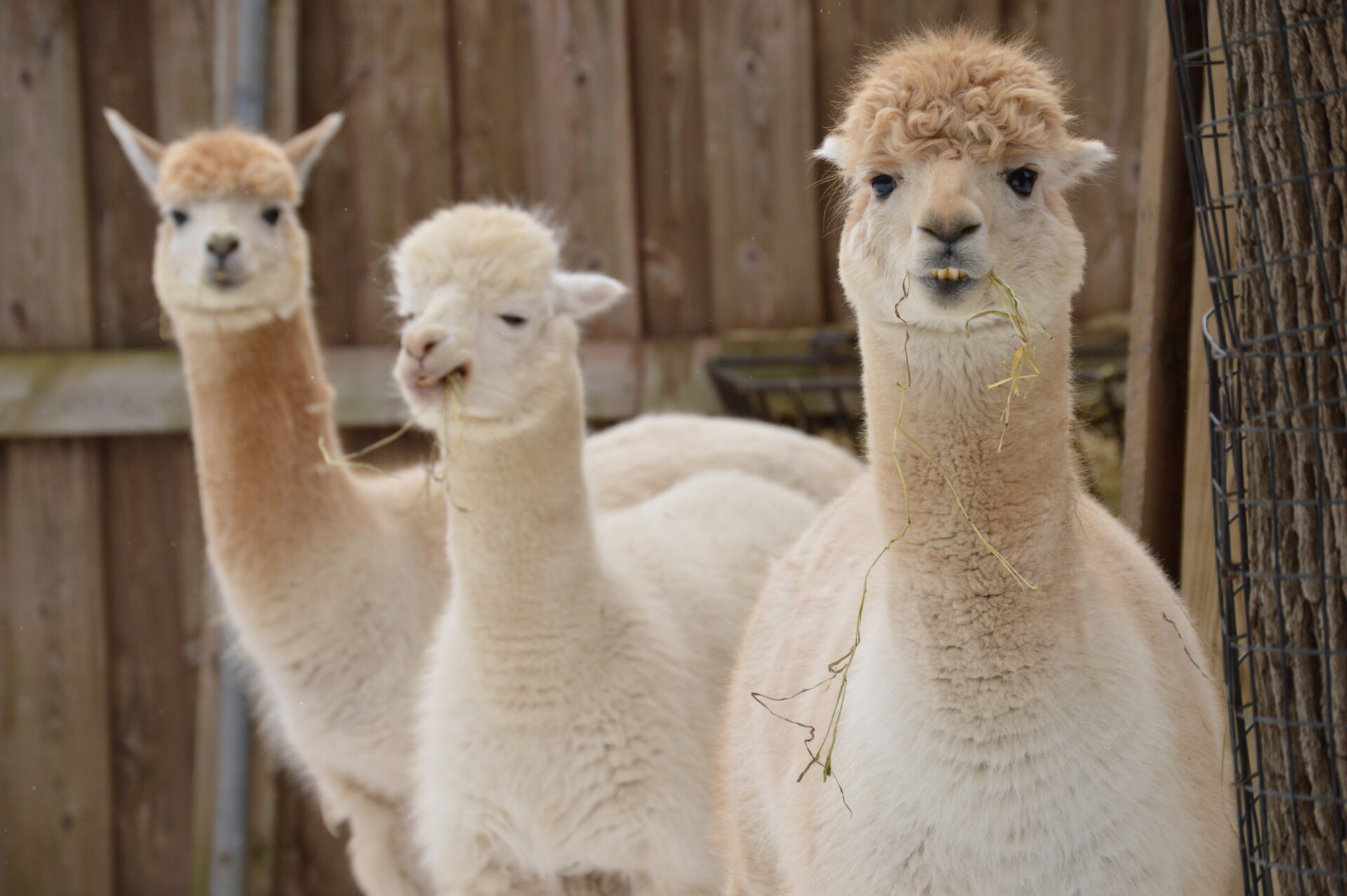Alpaca

Basic Information:
Scientific Name: Visugna pacos
Habitat: Originating in Peru, Alpacas are now domesticated and can be found throughout the entire world.
Diet: Alpacas mostly eat grass but can also eat wood, bark, and stems.
Size: 2.7 to 3.2 feet tall / 3.9 to 7 feet long
Weight: 110 to 190 pounds
Lifespan: 15 to 20 years
Distribution Map:
I.U.C.N. Conservation Status:

What does this mean?
Least Concern – a species determined by the International Union for Conservation of Nature (I.U.C.N.) to be pervasive, abundant, and thriving.
Our Alpacas:
Paqo (Male) – Born June 13, 2008
Kachay (Male) – Born September 20, 2008
Ozomatli/Oso (Male) – Born September 30, 2008
About Alpacas:
While similar in look to their cousins the llamas, alpacas are a smaller species that prefers to travel in herds than the primarily solitary llamas. Due to this herd nature in addition to their softer wool and docility, alpacas became domesticated around 6,000 years ago in Peru. Today, wild alpacas no longer exist. They are most popular for their fibers which are known to be silky and strong: one of the finest types of natural fleece in the world. Consequently, these can be used to make very popular and luxurious clothes which can be quite pricey!
Did You Know?!
- Alpacas create a community bathroom spot to keep poo away from their grazing areas.
- Alpacas have soft, padded feet that don’t damage delicate grasses as they graze and walk around.
- Alpacas are part of the camel family while also includes llamas, guanacos, and vicunas.
- When threatened and/or scared enough, alpacas are known to spit. However, this spit doesn’t only consist of saliva. It also contains the regurgitated contents of the alpacas stomach!
